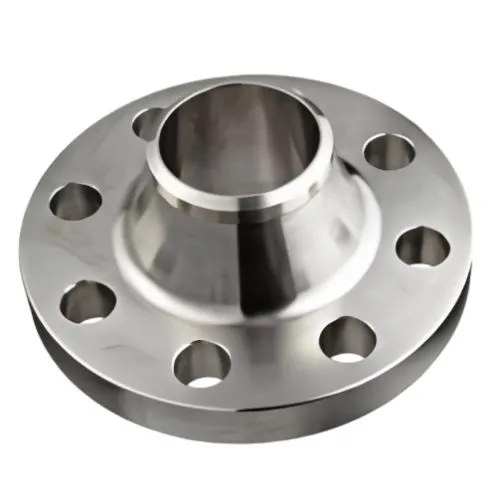-
Cangzhou Yulong Steel Co., Ltd.
-
Phone:
+86 13303177267 -
Email:
admin@ylsteelfittings.com
- English
- Arabic
- Italian
- Spanish
- Portuguese
- German
- kazakh
- Persian
- Greek
- French
- Russian
- Polish
- Thai
- Indonesian
- Vietnamese
- Zulu
- Korean
- Uzbek
- Hindi
- Serbian
- Malay
- Ukrainian
- Gujarati
- Haitian Creole
- hausa
- hawaiian
- Hebrew
- Miao
- Hungarian
- Icelandic
- igbo
- irish
- Japanese
- Javanese
- Kannada
- Khmer
- Rwandese
- Afrikaans
- Albanian
- Amharic
- Armenian
- Azerbaijani
- Basque
- Belarusian
- Bengali
- Bosnian
- Bulgarian
- Catalan
- Cebuano
- China
- China (Taiwan)
- Corsican
- Croatian
- Czech
- Danish
- Esperanto
- Estonian
- Finnish
- Frisian
- Galician
- Georgian
- Kurdish
- Kyrgyz
- Lao
- Latin
- Latvian
- Lithuanian
- Luxembourgish
- Macedonian
- Malgashi
- Malayalam
- Maltese
- Maori
- Marathi
- Mongolian
- Myanmar
- Nepali
- Norwegian
- Norwegian
- Occitan
- Pashto
- Dutch
- Punjabi
- Romanian
- Samoan
- Scottish Gaelic
- Sesotho
- Shona
- Sindhi
- Sinhala
- Slovak
- Slovenian
- Somali
- Sundanese
- Swahili
- Swedish
- Tagalog
- Tajik
- Tamil
- Tatar
- Telugu
- Turkish
- Turkmen
- Urdu
- Uighur
- Welsh
- Bantu
- Yiddish
- Yoruba

Nov . 25, 2024 07:50 Back to list
Welding Techniques for Pipe to Pipe Connections in Industrial Applications
Understanding Pipe to Pipe Weld
Welding is a fundamental process in metalworking that joins materials together, primarily metals or thermoplastics, to form a cohesive structure. Among the various welding techniques, pipe to pipe welding is a specialized method that requires a profound understanding of both the materials involved and the welding processes available. This article will explore the intricacies of pipe to pipe welding, including its methods, applications, and best practices.
What is Pipe to Pipe Welding?
Pipe to pipe welding involves the joining of two pipes together using a welding technique. This type of welding is essential in various industries, including oil and gas, water supply, and heating systems, where the integrity of pipe joints is crucial for safe and efficient operation. A robust and leak-free connection is vital to prevent financial losses and environmental hazards.
Common Welding Methods
Several welding techniques can be employed for pipe to pipe welding, each with its advantages and specific applications
1. TIG Welding (Tungsten Inert Gas Welding) TIG welding is known for its precision and ability to produce high-quality, clean welds. It uses a non-consumable tungsten electrode and an inert gas, usually argon, to shield the weld area from contamination. This method is ideal for thin-walled pipes and materials that require a high degree of control over the heat input.
2. MIG Welding (Metal Inert Gas Welding) MIG welding is a faster process than TIG and uses a continuous wire feed for the filler material. It is well-suited for thicker pipes and is often preferred in industrial settings where speed and efficiency are critical.
3. Stick Welding (Shielded Metal Arc Welding) This method uses a consumable electrode coated in flux to create a weld. Stick welding is versatile and can be used in various positions and with different materials, making it suitable for outdoor and less controlled environments.
pipe to pipe weld

4. Orbital Welding Orbital welding is a specialized technique where the welding torch moves in a circular path around the pipe joint. This method is often employed in the pharmaceutical and food processing industries due to its ability to ensure hygienic conditions and high precision.
Applications of Pipe to Pipe Welding
The applications of pipe to pipe welding are extensive. In the oil and gas industry, welded joints are critical for pipeline construction and maintenance, ensuring that liquids and gases can be transported safely over long distances. In construction and plumbing, welds are used to create robust connections between piping systems, while in manufacturing, welded pipes are integral to the creation of specialized equipment and machinery.
Best Practices for Successful Pipe to Pipe Welding
For successful pipe to pipe welding, several best practices should be observed
- Surface Preparation Clean the surfaces to be welded thoroughly to remove contaminants like rust, grease, and paint. - Proper Fit-Up Ensure a proper alignment and fit of the pipes, as this will affect the quality of the weld. - Correct Settings Adjust the welding parameters according to the thickness and type of material being welded. - Post-Weld Inspection Conduct inspections using non-destructive testing methods to ensure the integrity of the weld.
Conclusion
Pipe to pipe welding is a critical process that requires careful consideration of techniques, applications, and best practices. By understanding the various welding methods and their specific uses, professionals can ensure the creation of durable, high-quality welds that meet industry standards and safety requirements. With advancements in technology and materials, the future of pipe to pipe welding continues to evolve, promising even greater efficiencies and capabilities in the years to come.
Latest news
-
ANSI 150P SS304 SO FLANGE
NewsFeb.14,2025
-
ASTM A333GR6 STEEL PIPE
NewsJan.20,2025
-
ANSI B16.5 WELDING NECK FLANGE
NewsJan.15,2026
-
ANSI B16.5 SLIP-ON FLANGE
NewsApr.19,2024
-
SABS 1123 FLANGE
NewsJan.15,2025
-
DIN86044 PLATE FLANGE
NewsApr.19,2024
-
DIN2527 BLIND FLANGE
NewsApr.12,2024
-
JIS B2311 Butt-Welding Fittings LR/SR 45°/90° /180°Seamless/Weld
NewsApr.23,2024











